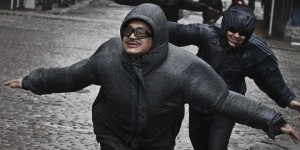

Associated Press
and Katie Zezima
Associated Press
ATLANTIC CITY, N.J. — Superstorm Sandy slammed into the New Jersey coastline with 80 mph winds Monday night and hurled an unprecedented 13-foot surge of seawater at New York City, flooding its subways and the electrical system that powers Wall Street. At least 10 U.S. deaths were blamed on the storm, which brought the presidential campaign to a halt a week before Election Day.
For New York City at least, Sandy was not the dayslong onslaught many had feared, and the wind and rain that sent water sloshing into Manhattan from three sides began dying down within hours.
Still, the power was out for hundreds of thousands of New Yorkers and an estimated 5.2 million people altogether across the East. And the full extent of the storm’s damage across the region was unclear, and unlikely to be known until daybreak.
In addition, heavy rain and further flooding remain major threats over the next couple of days as the storm makes its way into Pennsylvania and up into New York State.
Near midnight, the center of the storm was just outside Philadelphia, and its winds were down to 75 mph, just barely hurricane strength.
As the storm closed in, it converged with a cold-weather system that turned it into a superstorm, a monstrous hybrid consisting not only of rain and high wind but snow in West Virginia and other mountainous areas inland.
Just before Sandy reached land, forecasters stripped it of hurricane status, but the distinction was purely technical, based on its shape and internal temperature. It still packed hurricane-force wind, and forecasters were careful to say it was still dangerous to the tens of millions in its path.
Sandy made landfall at 8 p.m. near Atlantic City, which was already mostly under water and saw an old, 50-foot piece of its world-famous Boardwalk washed away earlier in the day.
The subway system was shut down Sunday night, and the stock markets never opened Monday and are likely to be closed Tuesday as well.
As the storm drew near, airlines canceled more than 12,000 flights, disrupting the plans of travelers all over the world.
Storm damage was projected at $10 billion to $20 billion, meaning it could prove to be one of the costliest natural disasters in U.S. history.
President Barack Obama and Republican challenger Mitt Romney canceled their campaign appearances at the very height of the race, with just over a week to go before Election Day. The president pledged the government’s help and made a direct plea from the White House to those in the storm’s path.
“When they tell you to evacuate, you need to evacuate,” he said. “Don’t delay, don’t pause, don’t question the instructions that are being given, because this is a powerful storm.”
While the hurricane’s 90 mph winds registered as only a Category 1 on a scale of five, it packed “astoundingly low” barometric pressure, giving it terrific energy to push water inland, said Kerry Emanuel, a professor of meteorology at MIT.
“We are looking at the highest storm surges ever recorded” in the Northeast, said Jeff Masters, meteorology director for Weather Underground, a private forecasting service. “The energy of the storm surge is off the charts, basically.”
At least half a million people along the East Coast had been ordered to evacuate, including 375,000 from low-lying parts of New York City.





